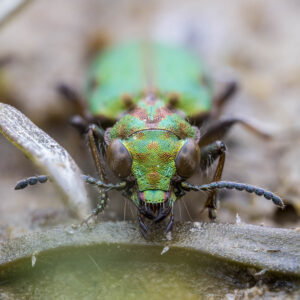Want to help out the bumblebee population? Get rid of asphalt and plant a diversity of flower species.
That’s the conclusion of a new study of a California native bumblebee published recently in the journal, Proceedings of the National Academy of Sciences.
Scientists from the UC Berkeley and the University of Texas at Austin looked at the genetic relatedness of Bombus vosnesenskii foraging in exurban habitats, farms and nature reserves. Because genetically related bees come from the same colony, they could determine how far afield the bees were foraging.
Areas with lots of paved roads and impervious construction were correlated with lower bumblebee numbers. Meanwhile, the bees tended to favor a more species diverse landscape, traveling farther from home to find patches of flowers rich in species.
The study sheds further light on how to protect bumblebees, which are vital to pollination and have been declining in numbers around the globe. Agriculture, which relies heavily on bumblebees, is providing poor habitat for bumblebees by mono-cropping.
Although it may seem obvious that pavement and ground nesting don’t mix, lead author Shalene Jha said the effects of pavement and urban growth on native bees has been largely anecdotal.
“We are potentially in a pollinator crisis,” said Jha, an assistant professor of biology at The University of Texas at Austin, in a press release. “Understanding how bees move around the landscape can help us both preserve biodiversity and improve crop yields.”
Senior author Claire Kremen, a professor at UC Berkeley’s Department of Environmental Science, Policy and Management, also participated in the research.





